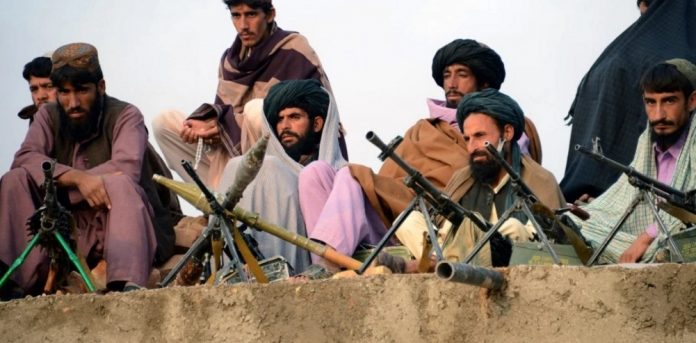
Iran is working with the Taliban to set up a buffer zone along its border with Afghanistan to keep out the Islamic State, the latest sign of how the rise of the Syrian-based terror group is turning longtime rivals into uneasy allies.
Tehran’s growing push to secure its 572-mile border with Afghanistan, which hasn’t previously been reported, marks a significant shift for the Shiite power. Iran had long seen the Taliban, a militant Sunni group, as a direct threat. Tehran also provided weapons and other assistance to the Northern Alliance during its war with the Taliban in the years before the American-led invasion of Afghanistan in 2001.
But Iran now believes that the Taliban pose much less of a threat than the Islamic State, whose expanding affiliate in Afghanistan is thought by U.S. officials to have as many as 3,000 fighters. President Barack Obama, who had once promised to end America’s longest war before leaving office, has instead given the Pentagon the green light to ramp up its air campaign against the Islamic State fighters inside Afghanistan. Between the beginning of January and the end of March, U.S. warplanes carried out roughly 100 strikes in Afghanistan, the vast bulk in the eastern province of Nangarhar, an Islamic State stronghold.
Tehran is going even further, and enlisting elements of the Taliban to slow the Islamic State’s expansion inside Afghanistan and prevent militants from the group – which espouses a violently anti-Shiite ideology – from crossing into Iran.
“The Iranians are already trying to secure their immediate borders towards Afghanistan against ISIS penetration by working together with various groups – warlords [and] Taliban – along their own borders to create a buffer zone,” the European Union’s special representative to Afghanistan, Ambassador Franz-Michael Mellbin, said in a recent interview. “They are already working on this.”
Mellbin said Iran’s willingness to set aside its historic enmity toward the Taliban stems, in part, from its intensifying rivalry with Saudi Arabia. The ambassador, who regularly meets with top Iranian officials, said Tehran believes that the Islamic State is effectively functioning as an arm of the Saudi Arabian government.
“Iran will interpret any move by ISIS as a front for forward-leaning aggressive behavior by Saudi Arabia,” he said. “If ISIS emerges along their eastern borders, the Iranians will feel that Saudi Arabia is creating a second front.”
The buffer zone covers a potentially expansive amount of terrain, with a person familiar with the matter saying that it stretches from Helmand province in the south of Afghanistan all the way to Kunduz province in the northern part of the country. The Taliban controls large parts of both provinces.
A U.S. intelligence official declined to comment on the nature of Iran’s cooperation with the Taliban, but said that “given Iran’s efforts against ISIL elements in Syria and Iraq, it would not be surprising if Iran is concerned with retribution from ISIL affiliates, including ISIL’s Khorasan branch.” Khorasan is the name the Islamic State uses for its militants in Afghanistan.
Two Western officials, speaking on condition of anonymity, said Tehran was providing Taliban forces along its border with money and small amounts of relatively low-grade weaponry like machine guns, ammunition, and rocket-propelled grenades. “It’s not a game-changer, but it’s not insignificant,” the official said.
Washington shares Tehran’s eagerness to fight the Islamic State affiliates inside Afghanistan, but worries that some of the money and weapons Iran is providing the Taliban could one day be used against American troops. State Department spokesman John Kirby said the United States wants “Iran to work directly and constructively with the Afghan government and the international community in support of Afghanistan’s stability, sovereignty, and territorial integrity.”
“No government should be providing the Taliban material support,” Kirby added.
The stepped-up cooperation between the Taliban and Iran is the latest strange bedfellows alliance created by the rise of the Islamic State. In Syria, the United States is effectively allied with Syrian President Bashar Assad in the fight against the group, bombing Islamic State targets from the air while Assad’s forces fight them on the ground. A similar dynamic is playing out in neighboring Iraq, where U.S. warplanes have taken the lead in the air war against the Islamic State while Iranian paramilitary forces, backed by Shiite militias directly armed and supported by Tehran, have helped slow the Islamic State’s territorial gains and begun to push the militants out of the areas they control.

